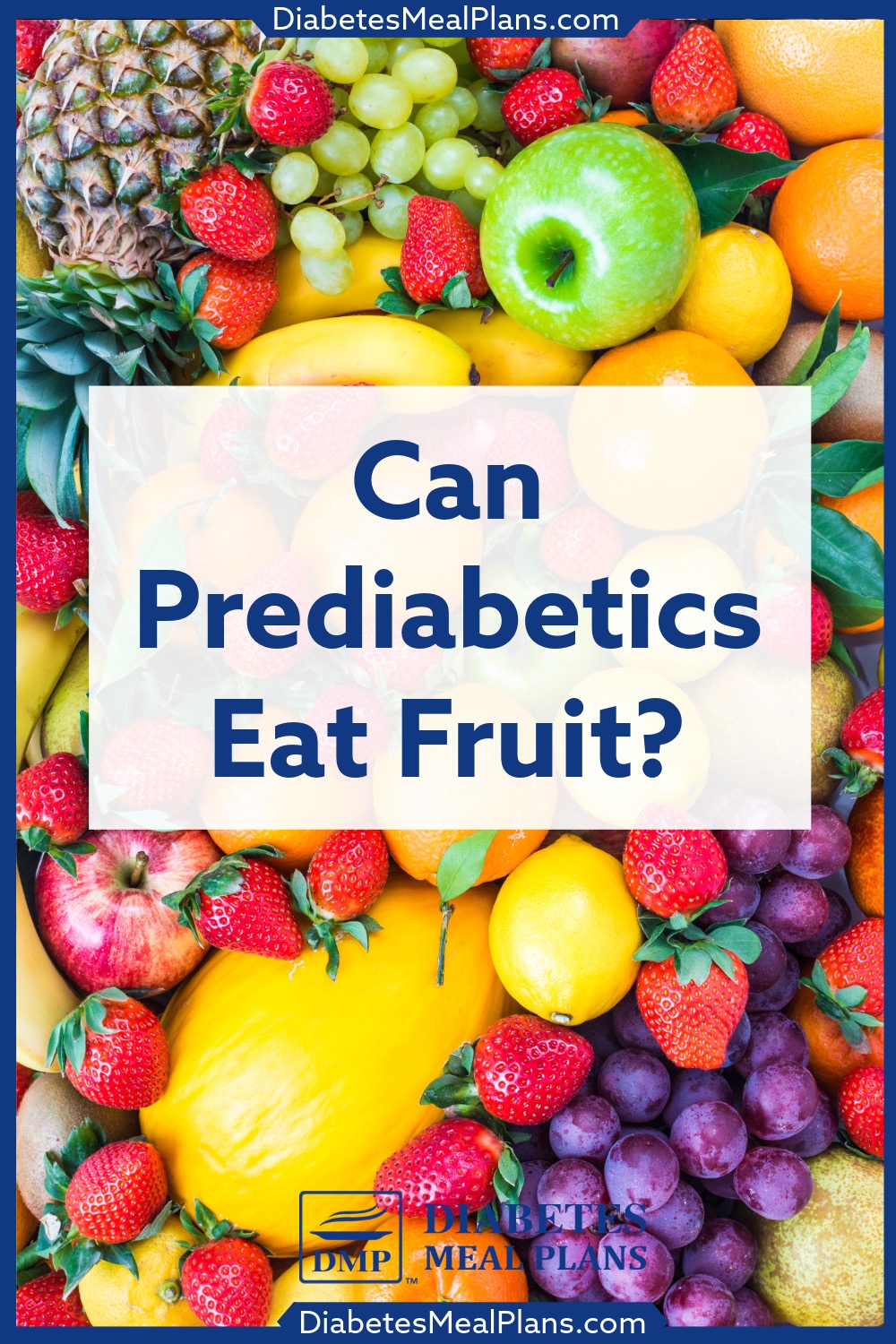With prediabetes, making smart food choices is essential. When it comes to fruit, you’ve probably heard conflicting advice.
Some people say it’s nature’s candy and should be avoided, while others say it’s a necessary part of a healthy diet. So, where does the truth lie?
Let’s explore whether fruit can fit into your prediabetes diet plan.
Spoiler alert: Many fruits are fine to eat. We’ll also explore how to enjoy fruit without negatively impacting your blood sugar levels.
Understanding Carbohydrates in Fruit
Fruits are naturally high in carbohydrates, particularly sugars like fructose, glucose, and sucrose.
The total carbohydrate content of fruit varies depending on the type and portion size, making it an important consideration for anyone with prediabetes who wants to lower A1c levels.
The natural sugars in whole fruit are often paired with fiber, which plays a vital role in digestion. Fiber slows down the rate at which sugars are absorbed into the bloodstream, leading to a more gradual rise in blood sugar levels.
This is why whole fruits are often a better choice compared to fruit juices or dried fruits, which lack fiber and can lead to sharper spikes in blood glucose.
However, not all fruits are created equal.
For example, berries and stone fruits like apricots contain fewer total carbohydrates per serving, while tropical fruits like bananas and mangoes are more carbohydrate-dense.
Selecting lower carb fruits can help you enjoy the benefits of fruit while maintaining better blood sugar control.

The Role of the Glycemic Index (GI)
The glycemic index (GI) is often used to estimate how quickly a particular food raises blood sugar levels.
While GI provides some insight into how the carbohydrates in fruit may affect your body, it doesn’t give the whole picture.
For instance, fruits like cherries, apples, and strawberries are considered lower on the GI scale, while tropical fruits such as pineapple and watermelon have higher GI values.
This often leads people to thinking that lower-GI fruits are better choices for managing blood sugar. However, research shows that GI is not always a reliable indicator of how your body will react to a particular food.
The reality is, the amount of carbohydrate in the food determines the impact of that food on your blood sugar level. GI may indicate a slower entry of carbs into the bloodstream but all carbs in a food still enters the bloodstream, period!

Benefits of Fruit for Prediabetes
While fruits contain sugar, they can provide a nutrients that contribute to our health, which is a tick for fruit.
For instance, the fiber in fruit is particularly beneficial. Fiber slows digestion, which helps regulate blood sugar levels after meals.
Additionally, fruits are rich in vitamins, minerals, and antioxidants that reduce inflammation and support metabolic health.
But again, it’s whole fruit consumption that is beneficial, not fruit juices—these are just all sugar with little, if any fiber!
It also comes down to choosing the right types of fruit to include in your eating plan.
Evidence on Fruit Consumption and Prediabetes
Research supports the inclusion of certain fruits in a diet for prediabetes.
A large study published in the British Medical Journal showed that specific fruits like blueberries, grapes, apples, pears and grapefruit were linked to a reduced risk of type 2 diabetes. The researchers attributed this to the high levels of polyphenols, natural compounds that improve insulin sensitivity.
But, we need to interpret results from population studies with caution, as it’s likely the people that eat more fruit have a healthier diet overall, so is it the fruit or the overall healthier diet that reduces risk of type 2 diabetes?
Something else that’s very important to keep in mind, as we noted earlier, not all forms of fruit are created equal.
Apples, pears, and grapes are higher in carbohydrates, so will need to be eaten in small portions. For example, half an apple (9g net carbs)—granny smith apples are a little better (7.8g net carbs), half a pear (8.9g net carbs) or 10 grapes (4.2g net carbs).
Net carbs is the digestible amount of carbs when we remove the fiber.
To achieve normal blood sugar and A1c levels, we’d generally recommend keeping fruit portions to 12g net carbs or less per sitting, so a fruit salad is certainly out of the question!
Dried fruits, fruit juices, and canned fruits in syrup are more concentrated in sugars and lack the fiber of fresh fruit. These are not suitable options. Always eat the whole fruit.

How to Include Fruit for Prediabetes
We encourage people with prediabetes to follow a low carb diet, as it quickly brings blood sugar levels into the normal range. The key with fruit is to make strategic choices and practice portion control.
Here’s how:
- Choose Lower Carb Fruits: Berries, cherries, seed fruits like apricot and plum, and citrus like mandarin are excellent options that have a lower impact on blood sugar.
- Limit Portions: Stick to small servings. For example, half a cup of berries, one small mandarin or one seed fruit fits well within most eating plans.
- Pair with Protein or Healthy Fats: Combine fruit with foods like nuts, cheese, or yogurt. This can help slow down the absorption of sugar into your bloodstream.
- Avoid High-Sugar Options: Skip dried fruits, fruit juices, and tropical fruits like pineapple or mango, which are more likely to spike your blood sugar.
Conclusion
So, can you eat fruit if you have prediabetes? The answer is yes—with some caveats.
Focus on lower carb fruits, monitor your portions, and avoid processed forms of fruit.
By doing so, you can enjoy the health benefits of fruit while keeping your blood sugar within the health range.

Leave a Reply